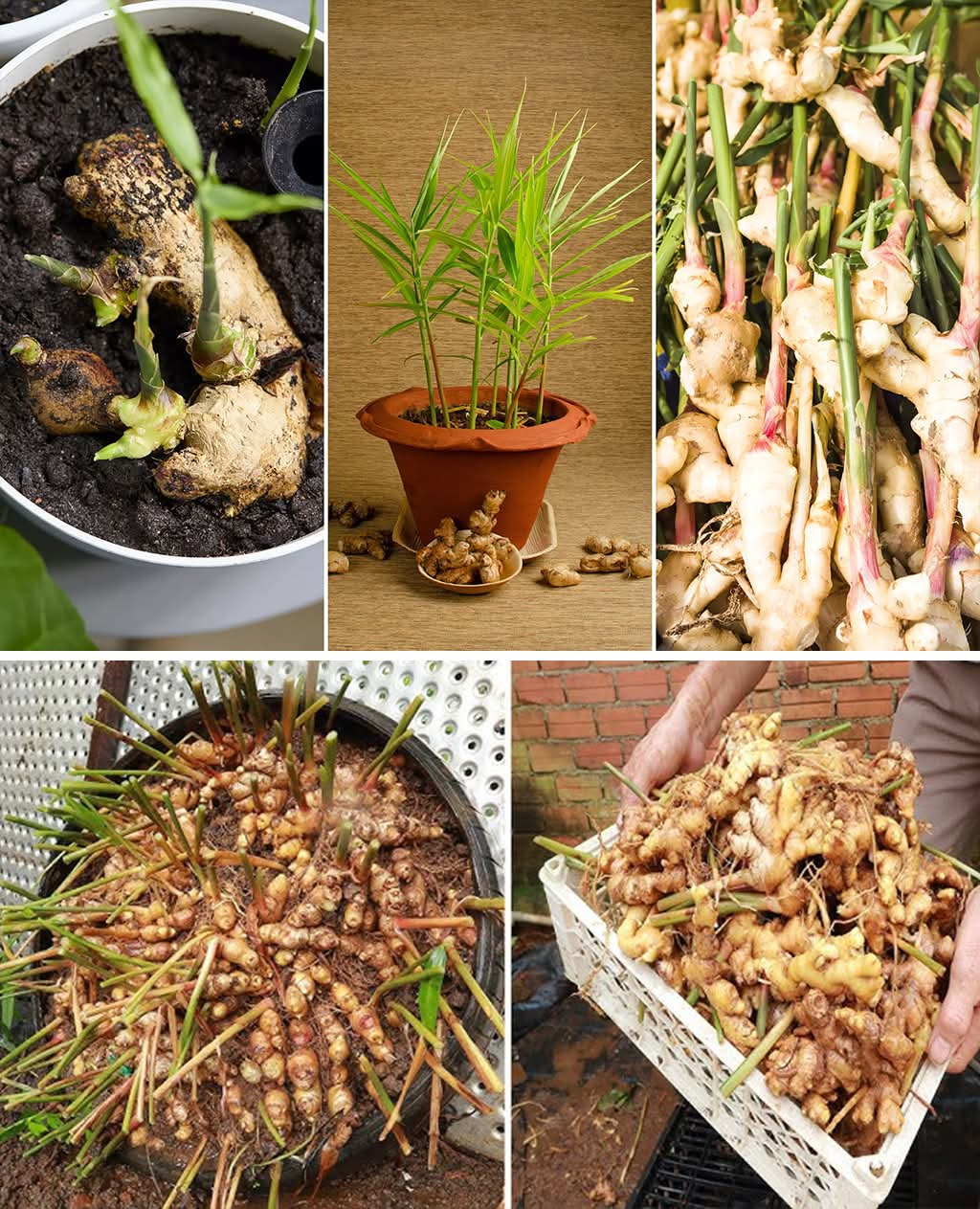Growing Ginger at Home for an Endless Supply (and Getting It to Bloom)
Ginger is one of the easiest and most rewarding plants to grow at home. Whether you have a garden, a balcony, or even just a sunny kitchen window, you can produce an endless supply of fresh ginger roots using simple, sustainable methods. With the right care, ginger can even bloom, producing beautiful, fragrant flowers. This guide explains how to plant ginger, how to boost its growth, and how to maintain a continual harvest for home cooking, natural remedies, and overall healthy living.
Why Grow Ginger at Home
Homegrown ginger is fresher, more flavorful, and more nutrient-dense than store-bought options. Growing ginger also supports sustainable living, reduces grocery costs, and provides a reliable source of healthy ingredients for tea, cooking, and natural wellness. Because ginger expands horizontally underground, one piece can multiply into dozens of new roots when grown correctly.
How to Grow Ginger at Home for a Continuous Harvest
1. Choose the Best Ginger Rhizomes
The success of your ginger crop starts with your rhizomes. Select fresh, firm pieces that have visible “eyes” or buds. Avoid shriveled or moldy roots. Organic ginger is ideal because it is free from chemicals that may delay sprouting.
Tips for Selecting High-Yield Rhizomes
• Choose pieces with multiple growing points
• Look for plump, healthy segments
• Ensure the skin is smooth and unwrinkled
These qualities help ensure fast sprouting and strong root development.
2. Pre-Sprout Ginger for Faster Growth
To accelerate germination, soak the ginger for 24 hours in room-temperature water. This softens the skin and reactivates dormant buds. Place the ginger in a warm, bright area until shoots begin forming. Pre-sprouting is one of the best home gardening tips for achieving faster growth and higher yields.
3. Use the Right Soil Mix
Ginger prefers loose, fertile soil that drains well. A mixture of compost, cocopeat, and garden soil creates the perfect environment for root expansion. Good drainage prevents rot and encourages large, healthy rhizome clusters.
Ideal Soil Composition
• 40 percent compost
• 40 percent loose garden soil
• 20 percent cocopeat or sand
This combination supports strong nutrient absorption and sustainable plant care.
4. Plant Ginger Properly
Plant the rhizomes shallowly, with the buds facing upward. Space each piece 10–15 cm apart to allow room for growth. Cover lightly with soil and water gently.
Best Containers for Indoor Gardening
• Wide pots
• Raised beds
• Large plastic grow bags
Because ginger grows horizontally, wide containers are more effective than deep ones.
5. Keep the Soil Moist, Not Wet
Ginger thrives in moist, humid conditions but suffers quickly from waterlogged soil. Water consistently but avoid overwatering. Mulching the soil surface helps retain moisture and regulates temperature.
Effective Moisture Control Techniques
• Use organic mulch like straw or leaves
• Water early in the morning
• Check soil moisture before watering again
Proper watering results in larger, healthier rhizomes.
6. Feed Ginger With Organic Fertilizers
Ginger responds extremely well to natural fertilizers. Organic feeding improves root division, increases yield, and provides long-term soil health. High-RPM gardening keywords often highlight organic fertilizers because of their safety and effectiveness.
Top Organic Fertilizers for Ginger
• Compost tea
• Banana peel water
• Aged manure
• Wood ash
• Seaweed extract
Apply a gentle fertilizer every two weeks to maximize growth.
7. Provide Warm Temperatures and Partial Shade
Ginger loves warmth and humidity. It grows best in temperatures between 22 and 30°C. Avoid direct afternoon sunlight, which can scorch the leaves.
Ideal Light Conditions
• Morning sun
• Bright, indirect light
• Dappled shade outdoors
Providing the right light helps ginger produce lush foliage and strong rhizomes.
How to Harvest Ginger for Endless Supply
Ginger can be harvested gradually, allowing the plant to regenerate. After three to four months, you can begin collecting young, tender pieces without disturbing the entire root system.
Continuous Harvest Technique
• Dig gently around the base
• Remove only what you need
• Cover the remaining roots again
This method ensures year-round availability and supports sustainable home gardening.
How to Get Ginger to Bloom
Ginger flowers are exotic, fragrant, and highly decorative. Not all varieties bloom indoors, but with the right environment, flowering is possible.
Requirements for Ginger Blooming
• Mature plants at least 10–12 months old
• High humidity
• Warm temperatures
• Nutrient-rich soil
• Consistent moisture
Ginger blooms are rare indoors, but when they do appear, they add beauty and elevate your indoor gardening space.
Final Thoughts
Growing ginger at home is simple, rewarding, and cost-effective. With proper soil, consistent moisture, organic fertilizers, and warm conditions, you can enjoy an endless supply of fresh ginger throughout the year. These gardening techniques support sustainable living, high-yield plant production, and healthy home improvement practices. Whether grown indoors or outdoors, ginger is one of the best plants for anyone looking to grow food at home with minimal effort.
